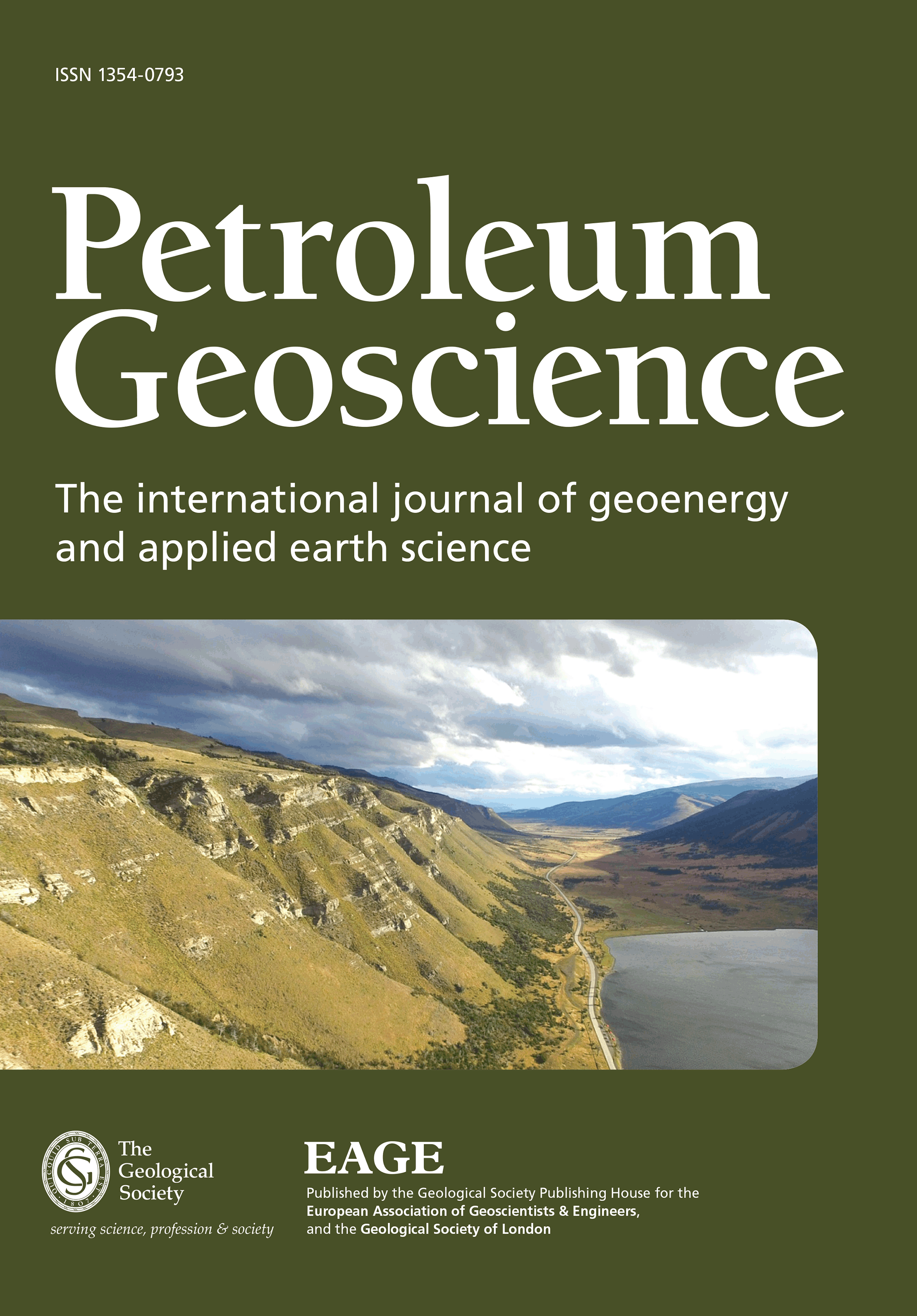
Full text loading...
The SB1 strike-slip fault zone, which developed in the north of the Shuntuo Low Uplift of the Tarim Basin, plays an essential role in reservoir formation and hydrocarbon accumulation in deep Ordovician carbonate rocks. In this research, through the analysis of high-quality 3D seismic volumes, outcrop, drilling and production data, the hydrocarbon-bearing characteristics of the SB1 fault are systematically studied. The SB1 fault developed sequentially in the Paleozoic and formed as a result of a three-fold evolution: Middle Caledonian (phase III), Late Caledonian–Early Hercynian and Middle–Late Hercynian. Multiple fault activities are beneficial to reservoir development and hydrocarbon filling. In the Middle–Lower Ordovician carbonate strata, linear shear structures without deformation segments, pull-apart structure segments and push-up structure segments alternately developed along the SB1 fault. Pull-apart structure segments are the most favourable areas for oil and gas accumulation. The tight fault core in the centre of the strike-slip fault zone is typically a low-permeability barrier, whilst the damage zones on both sides of the fault core are migration pathways and accumulation traps for hydrocarbons, leading to heterogeneity in the reservoirs controlled by the SB1 fault. This study provides a reference for hydrocarbon exploration and development of similar deep-marine carbonate reservoirs controlled by strike-slip faults in the Tarim Basin and similar ancient hydrocarbon-rich basins.

Article metrics loading...

Full text loading...
References


Data & Media loading...

